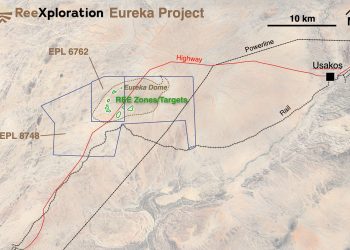
Namib Desert Diamonds (NAMDIA) says the emergence of synthetic diamonds does not threaten the viability of the country’s diamonds in the sector.
NAMDIA Chief Executive Officer Alisa Amupolo said diamonds produced in the country are regarded as premium, high-end diamonds.
“This is the most resilient tier as even though they are less in the market, they represent 80% of the value of the market,” Amupolo told The Brief.
“This market has been resilient because it’s normally for ultra-net, high net worth, and it’s normally for the luxury market. So if you look at the top layer of the tier, in terms of the ranges that Namibia produces, the last to be touched is always your premium.”
Amupolo said that the sector is safe as NAMDIA has always been able to fetch good margins and when goods are purchased from Namibia Diamond Trading Company (NDTC), movement in the market is factored into the price.
“But of course, the window between sorting and rolling on our end could be a two-week window and there might be movement, but it will be marginal because we have quite high goods,” Amupolo said.
Amupolo said when an economic downturn hits, it normally hits middle-income earners and it generally doesn’t affect premium, that coupled with sustainable sourcing of Namibian diamonds as well as the impact the diamonds have in economic social transformation on the livelihood of the source of origin plays a role in the value proposition of natural diamond.
“…their prices are plummeting simply because they have a stronger carbon footprint [synthetic diamonds]. So, at the end of the day, consumers are very conscious about environmental preservation and carbon emission reduction, are asking about energy consumption, around the production of synthetic diamonds, and hence we’ve seen their prices drop dramatically,” Amupolo said.
Speaking on the threat of synthetic diamonds, the Chairperson of the board of NAMDIA, Bryan Eiseb has stated that the challenges the sector is facing are more structural than cyclical because of the pressure being exerted by synthetic diamonds in certain categories.
He said: “Despite these risks, we must not forget that synthetic diamonds are not yet proven that they are a lasting alternative to natural diamonds, nor can they serve as a store of value. Natural diamonds in contrast have displayed that their natural beauty coupled with their natural formation process remains a store of value and a “woman’s best friend”.
For the 2022/2023 financial year, NAMDIA sold 278,609 carats of diamonds, a 29% increase in nine sales, fetching average buying prices ranging from US$581 per carat to an average selling price of US$669 per carat.
According to a leading diamond industry analyst, lab-grown diamond jewelry sales grew globally to almost US$12 billion in 2022, up 38% year-over-year. In 2023, so far, the industry has sold US$14.6 billion worth of lab-grown diamonds worldwide.







